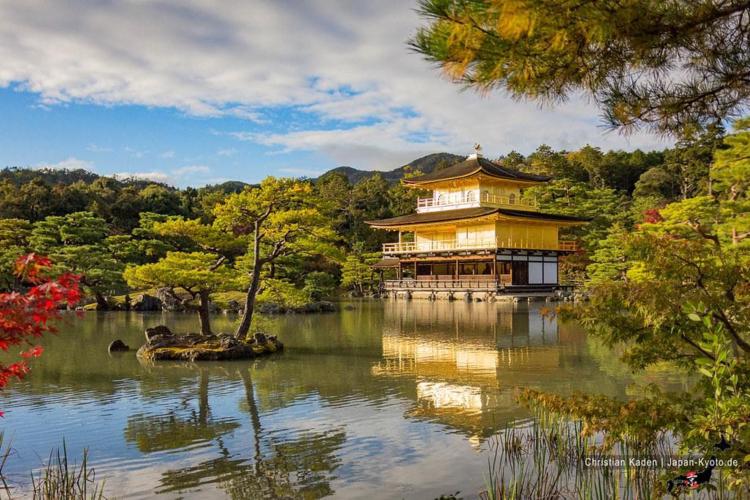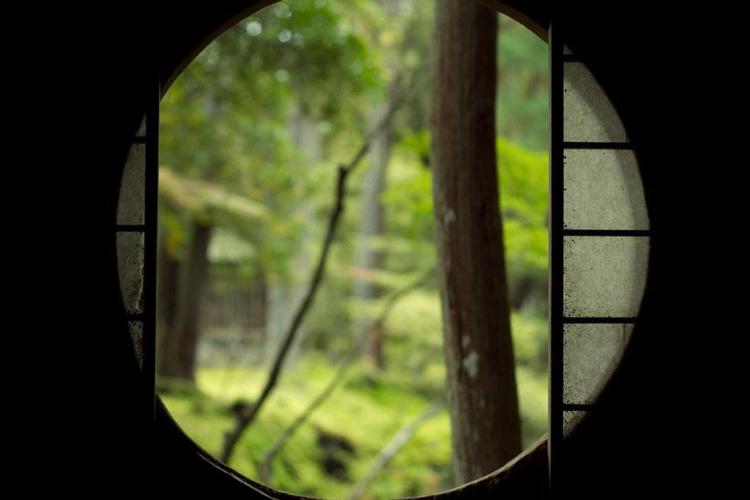January 16, 2022 by 奥 (Oku)
Japanese Garden Design: a Primer
Japanese gardens have long been revered by the Japanese for their elegance, natural beauty and astounding scenery and have an intrinsic value to Japanese culture and traditions.
There are many types of Japanese gardens, from strolling gardens (Kaiyushiki-Teien) featuring large ponds in which poets, artists, nobles and peasants alike took long contemplative walks, to the buddhist dry rock gardens (Karesansui), in which monks would meditate and contemplate these gardens as a way of reaching enlightenment.
The history of Japanese gardens goes back hundreds of years. They are first recorded in the Nihon-Shoki — a chronicle describing Japanese folktales, history and legends which is dated to around the 8th century A.D. These early gardens were influenced by Shinto (Japan’s indigenous religion) and later Tang dynasty Chinese gardens and Buddhism, and eventually became the gardens we know today.
As stated above, there are many types of Japanese gardens, my favorite being the tea garden (Chaniwa), with its narrow pathways consisting of stone slabs and lanterns and lush dark green foliage. However, the basis of all these gardens is stone, trees and water. Even the Zen Buddhist dry rock gardens have the representation of water, taking the form of rocks with the ripples resembling waves and the rocks resembling great islands and mountains, and scenes like the legendary mount Hōrai.
The most suitable type of Japanese garden at home is the courtyard garden (Tsuboniwa), requiring little space but still providing a feeling of zen and serenity. Rocks may be arranged in their natural form to symbolize mountain ranges, waterfalls, streams and more. Rocks may even represent animals like turtles, which symbolize longevity.
When constructing a Japanese garden, keep in mind the three elements that form the basis of them. Water features can take the form of ponds, deer scarers (Shishi-Odoshi), fountains and water basins (Tsukubai). Unlike western gardens, Japanese gardens usually don’t feature extravagant flowers. Japanese culture puts a huge emphasis on the changing seasons, and tries to reflect these ideas in Japanese gardens. Spring should invoke a mood of rebirth and starting over, thus plants that go into leaf or flower in spring should be added. However, they shouldn’t be too dramatic and must be able to blend into the next season seamlessly, so choose delicate and humble flowers of little color. For summer, a dark green color pallet for the garden is preferable. Summers in Japan are swelteringly hot and so a cool looking garden will help the mind cool down. Dripping water also provides the same effect. For fall, you want plants that change color, think maples, ginkgo, etc.. Be sure to also have some evergreen plants like mosses, ferns, pines and azaleas. For winter, you want plants that show their framework of branches, so you can appreciate the masterful design and structure.
Another essential element of Japanese gardens is the philosophical concept of Wabi-Sabi. Wabi-Sabi is the idea that in nature nothing is perfect and of accepting the impermanence and incompleteness of it all. For this reason, when you are creating a Japanese garden, avoid symmetrical shapes. The stone and bamboo ornaments should show wear, and be covered in algae and mosses. There is a story that recounts when the famous tea master Sen-No-Rikyu was tasked with tidying up a tea garden for his teacher. He cleaned the garden perfectly, He raked all the leaves and the stone garden. When he was done, he shook the branch of a maple tree, and beautiful red colored leaves fell upon the ground. These ideals should be incorporated into the Japanese garden to evoke a feeling of impermanence and existentialism.
Ma literally means “stop” or “pause” and is a concept of empty or negative space in Japanese aesthetics — including gardens. When making a Japanese garden, you shouldn’t pack the garden with plants, try to create empty space between them so as to not make it too crowded. Trying to create these empty spaces can be tricky, but it should be manageable. A trick to make it easier is to establish a central viewing point of the garden, and decide which areas would be good to plant or leave empty. There should be balance between the negative and filled space, so keep that in mind. Another golden rule you probably already know is to put smaller plants in the foreground, and bigger ones in the background to establish depth, and make the garden seem bigger than it actually is. For achieving depth in the garden you can also use ponds, rocks, lanterns, etc.. When using a path, make it twist and bend like a river through the landscape. However, avoid cluttering your garden. A lot of people fall victim to this mistake, leading to their garden feeling crowded, messy and staged. Instead of relieving the viewer of stress, they create it. Don’t add large or monumental plants that throw the scale of the garden off balance. Japanese gardens are representations of nature via a human view.
The typical dry rock gardens are as complex as any other Japanese gardens — they too make use of negative space and stones resembling majestic mountain ranges and islands. A group of stones and rocks together can resemble a waterfall or mountains, when constructing mountains, consider the optimal angle of the rock, taking into account natural relief, texture and shape. You should also leave ample negative space, which resembles the clouds and fog between the mountain peaks. The rocks used to represent the water shouldn’t be larger than small pebbles, as larger rocks can lead to loss of texture in the raking of the rocks and sand. Long diagonal ripples along the rock garden resemble oceans; a path of twisting ripples is a river; uneven patches of ripples across the garden are clouds; ripples around rocks are waves reaching the shore. Beware of weeds and other plants growing in between the rocks, as these ruin the view and the illusion of continuity in the garden. Establishing a central viewpoint for the dry rock is essential, so choose it wisely.
Japanese gardens and the traditions around them are tremendously complex, But I hope I have established a starting point for people trying to make their own or just provided a good and interesting read for those who have heard about them and wish to learn more.





